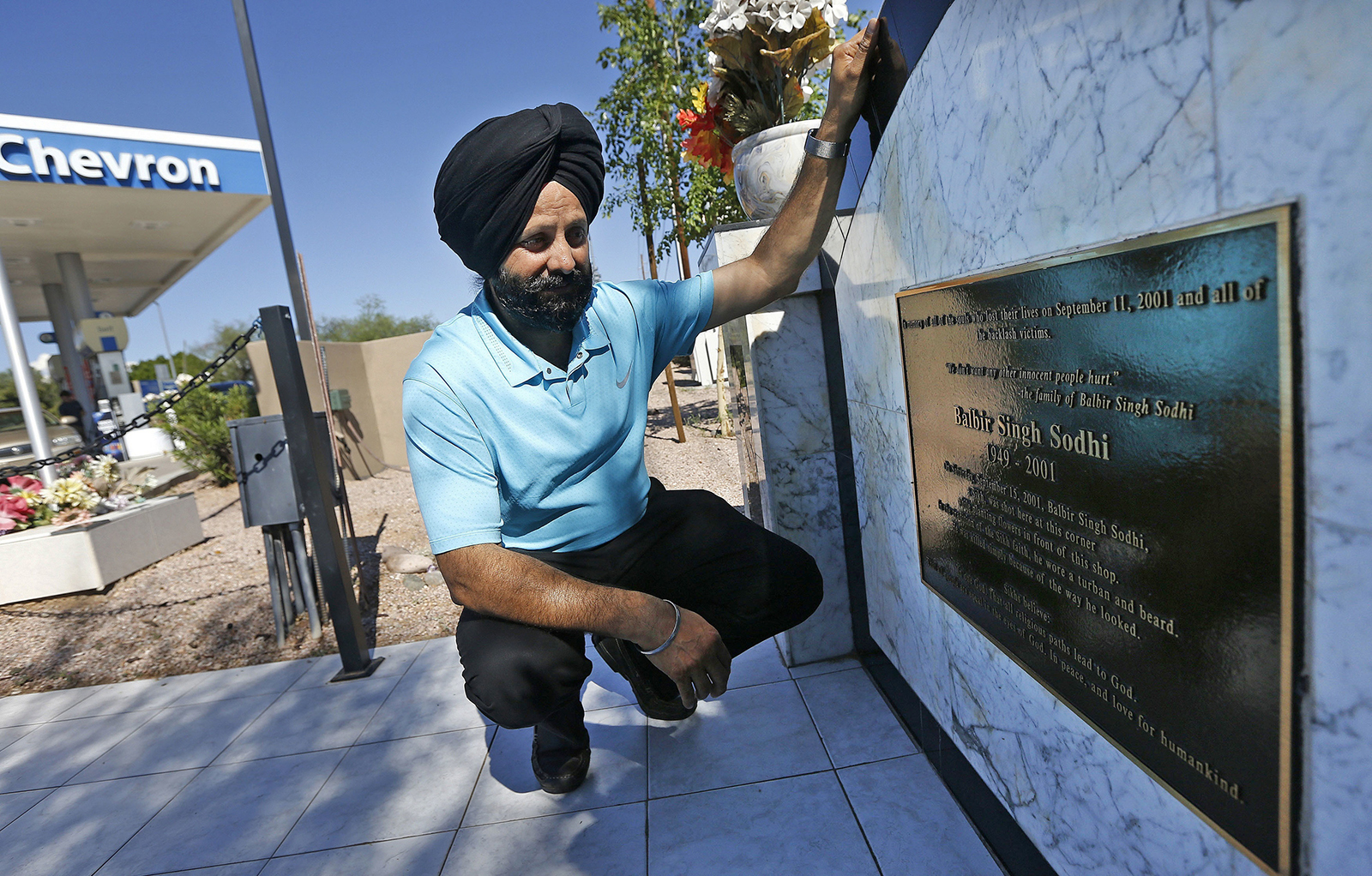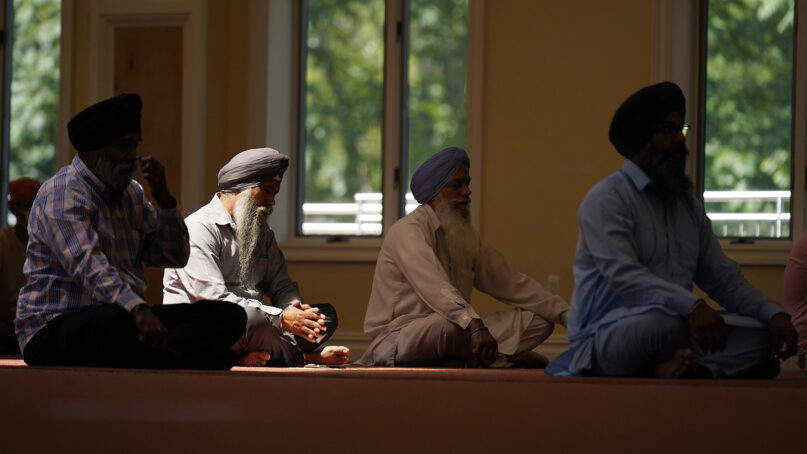(RNS) — I was a senior in high school when the terrorist attacks of 9/11 happened.
During passing period that morning, a friend mentioned that there might have been a terrorist attack in New York City. Not knowing the seriousness of what had occurred, I offered a joke in response: “I hope they didn’t have turbans.” We laughed and went on our way.
Since we’d grown up in Texas, New York City felt nearly as foreign to us as terrorism. We hadn’t experienced much of either during our lifetimes, so the possibility of an attack in the Big Apple didn’t weigh heavily on us.
I walked to Mrs. Strong’s classroom, where some friends and I used to hang out before school each day. She had the television on, which was unusual. We stood next to her silently as we watched the Twin Towers come down. None of us knew what to do.
Soon, news channels began to show images of the primary suspect. I’d never heard of Osama bin Laden, but he may as well have been my identical twin: turban, beard, brown skin. I knew Americans would not stop to tell the difference between us. I knew immediately that my life would change forever.
Over the next few days, we kept watch on the news during the day, trying to understand what had happened to our country, and how. In the evenings, we would gather around the phone, listening to Sikhs from around the U.S. sharing the latest updates from their local communities: who had been attacked in hate, how they were doing and what the local Sikh community was doing to ensure they were safe.
Hate seemed to be worst near ground zero, and a few gurdwaras and local leaders there began working together to create whatever safety they could for the Sikh communities. That grassroots effort would coalesce as the Sikh Coalition, now the largest Sikh civil rights organization in the nation. I began volunteering with them in the wake of 9/11 and have continued working with them to this day.
Although the internet was not nearly as accessible or omnipresent then as it is today, some of the organizers behind what would become the Sikh Coalition saw the need for a rudimentary central database to record the hate Sikhs endured in this moment. They created an online message board where people could share the bigotry they experienced.

In this Aug. 19, 2016, file photo, Rana Singh Sodhi kneels near his service station in Mesa, Arizona, next to a memorial for his brother, Balbir Singh Sodhi, who was murdered in the days after the Sept. 11 terrorist attacks. Sodhi, a Sikh American, was killed at his Arizona gas station four days after the Sept. 11 attacks by a man who announced he was “going to go out and shoot some towel-heads” and mistook him for an Arab Muslim. (AP Photo/Ross D. Franklin, File)
It also served as a hub for Sikhs around the country, like 18-year-old me, curious to know what was happening and how seriously to take the cautions for potential violence.
Perhaps, like many 18-year-olds, I felt impervious to what might happen to us Sikhs. I guess that’s how many of us are. We like to think that other people’s hate can’t affect our lives — until suddenly it does, at which point it’s too late to protect ourselves and our families.
In watching the Sikh community respond, I felt a new sense of consciousness, at once proud of our ability to organize in the face of disaster and concerned about how the heightened scrutiny would affect us psychologically, both immediately and in the long term.
I soon realized that this was a misguided question, for myself personally and for the Sikh community at large. Perhaps the challenges felt new to me because I hadn’t personally experienced them before. But they were not new for our community. My parents’ generation endured the anti-Sikh violence of the 1980s. My grandparents’ generation endured the violence of Partition, the largest and most deadly mass migration in human history. And generations of Sikhs before us endured so much worse.
When people ask me how I’m able to endure the specter of bigotry as a visible Sikh in modern America, the answer now feels simple and honest: perspective.
Maintaining perspective — realizing that Sikhs had faced as much, or worse, before — is a powerful way to resist the tendency to focus on one’s own suffering, even the suffering of one’s own community. It’s also a way to feel connected to their past, a connection that can help remind someone of their why and also their how.
In a moment of extreme difficulty for myself and my family, and in the 20 years since, I have thought often about what others before me have endured so that I may be here today. That’s why, today, despite the challenges I face personally, I feel blessed and grateful.






